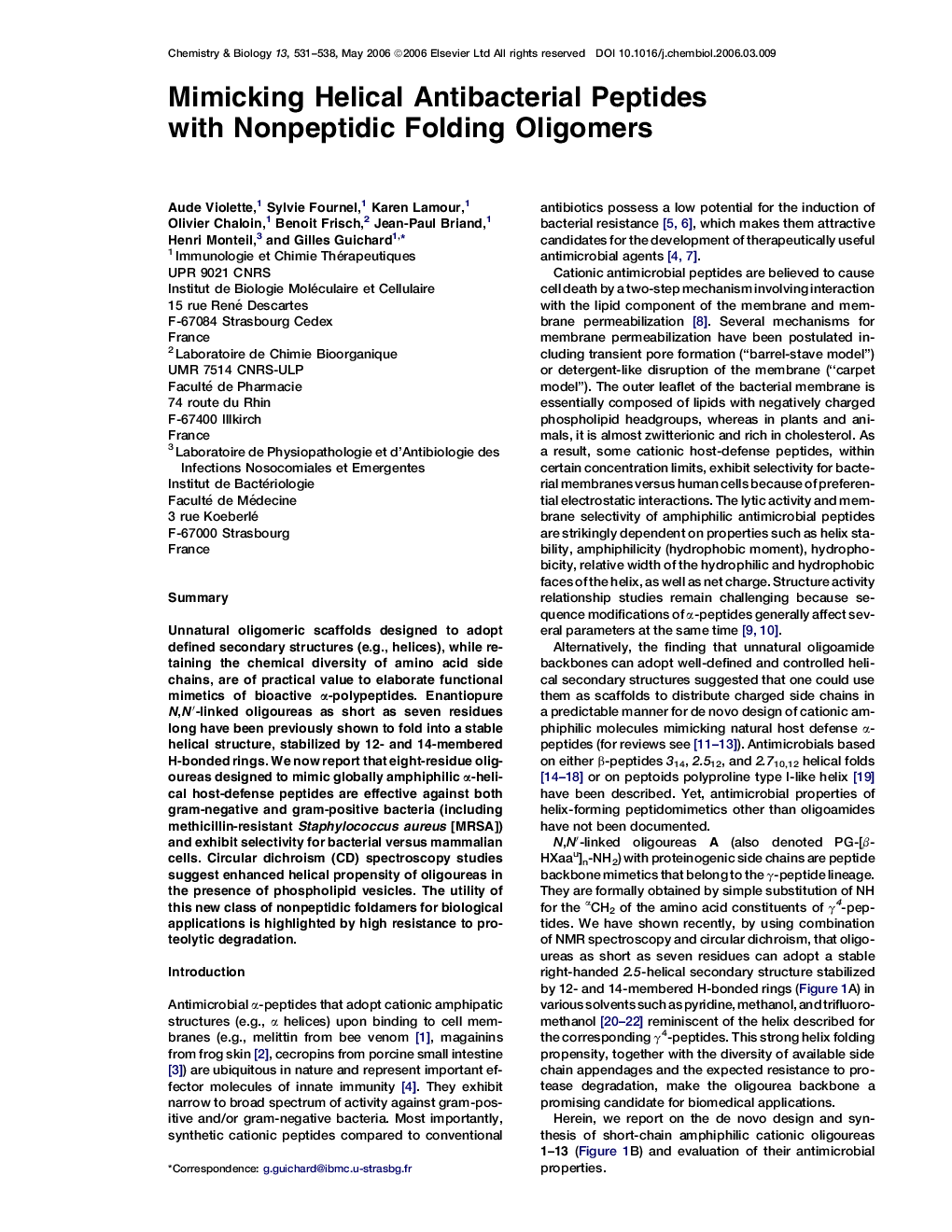| Article ID | Journal | Published Year | Pages | File Type |
|---|---|---|---|---|
| 1392931 | Chemistry & Biology | 2006 | 8 Pages |
SummaryUnnatural oligomeric scaffolds designed to adopt defined secondary structures (e.g., helices), while retaining the chemical diversity of amino acid side chains, are of practical value to elaborate functional mimetics of bioactive α-polypeptides. Enantiopure N,N′-linked oligoureas as short as seven residues long have been previously shown to fold into a stable helical structure, stabilized by 12- and 14-membered H-bonded rings. We now report that eight-residue oligoureas designed to mimic globally amphiphilic α-helical host-defense peptides are effective against both gram-negative and gram-positive bacteria (including methicillin-resistant Staphylococcus aureus [MRSA]) and exhibit selectivity for bacterial versus mammalian cells. Circular dichroism (CD) spectroscopy studies suggest enhanced helical propensity of oligoureas in the presence of phospholipid vesicles. The utility of this new class of nonpeptidic foldamers for biological applications is highlighted by high resistance to proteolytic degradation.
